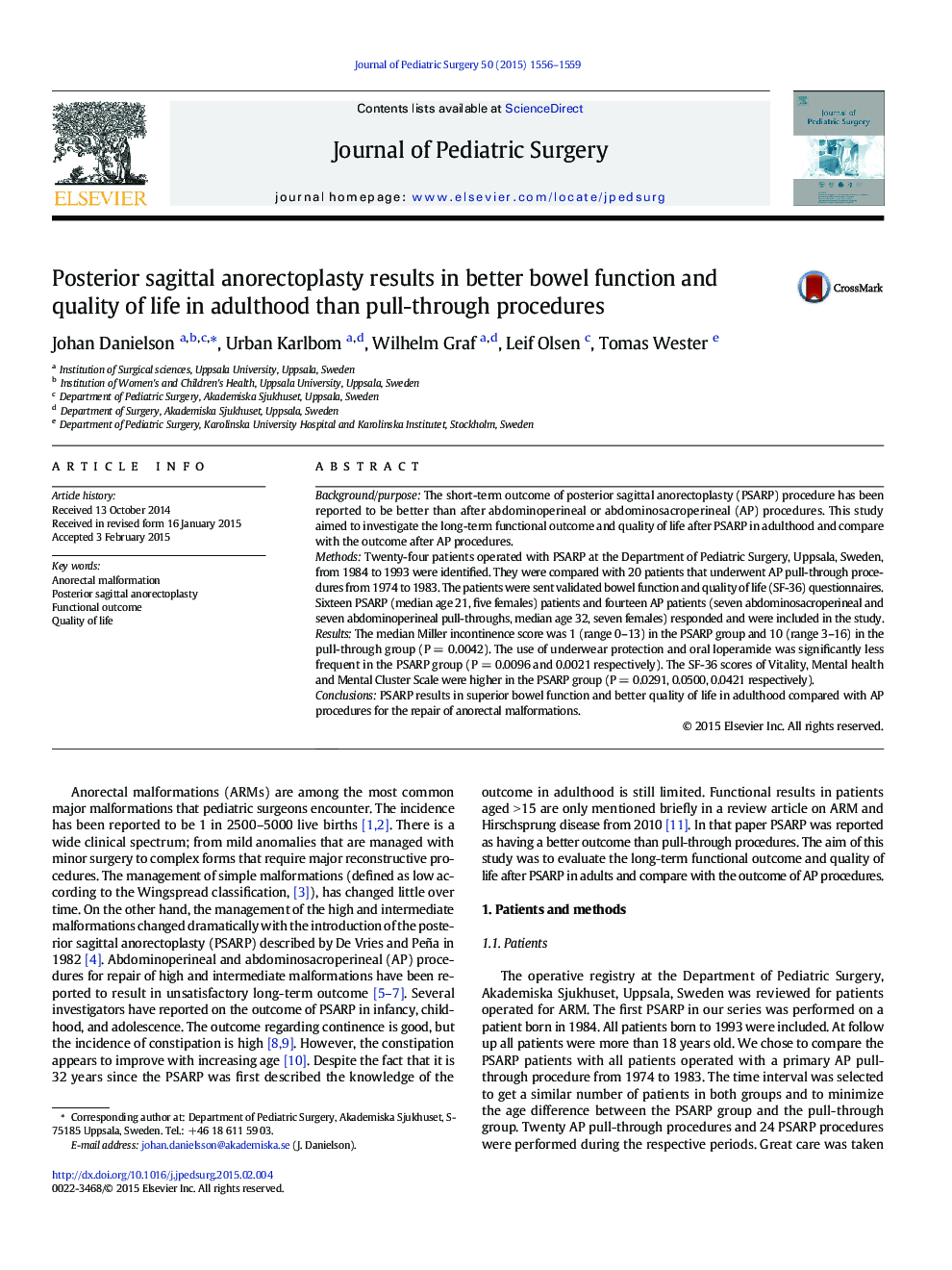| Article ID | Journal | Published Year | Pages | File Type |
|---|---|---|---|---|
| 4155266 | Journal of Pediatric Surgery | 2015 | 4 Pages |
Background/purposeThe short-term outcome of posterior sagittal anorectoplasty (PSARP) procedure has been reported to be better than after abdominoperineal or abdominosacroperineal (AP) procedures. This study aimed to investigate the long-term functional outcome and quality of life after PSARP in adulthood and compare with the outcome after AP procedures.MethodsTwenty-four patients operated with PSARP at the Department of Pediatric Surgery, Uppsala, Sweden, from 1984 to 1993 were identified. They were compared with 20 patients that underwent AP pull-through procedures from 1974 to 1983. The patients were sent validated bowel function and quality of life (SF-36) questionnaires. Sixteen PSARP (median age 21, five females) patients and fourteen AP patients (seven abdominosacroperineal and seven abdominoperineal pull-throughs, median age 32, seven females) responded and were included in the study.ResultsThe median Miller incontinence score was 1 (range 0–13) in the PSARP group and 10 (range 3–16) in the pull-through group (P = 0.0042). The use of underwear protection and oral loperamide was significantly less frequent in the PSARP group (P = 0.0096 and 0.0021 respectively). The SF-36 scores of Vitality, Mental health and Mental Cluster Scale were higher in the PSARP group (P = 0.0291, 0.0500, 0.0421 respectively).ConclusionsPSARP results in superior bowel function and better quality of life in adulthood compared with AP procedures for the repair of anorectal malformations
